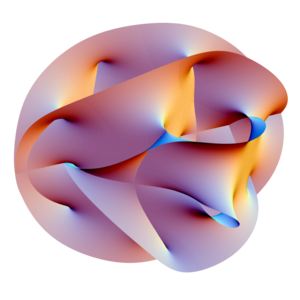Perthblog
Higher Dimensions the Next Step for AI?

AI tries to replicate how humans think. But we know almost nothing about the actual mechanisms behind thinking. Sure we know quite a lot at the level of neuroanatomy. But this still doesn’t tell us how it all works. Check out this book Behave by Robert M. Sapolsky; it’s magisterial, comprehensive, but utterly boring because of this lack of understanding.
So if we could find out how brains really work, that would be a big deal right? Not just for neuroscience types, but also for the AI mavens. Well, we might have found the Holy Grail. Check out this article in New Scientist (“Throwing Shapes” by Anil Ananthaswamy, 30 September 2017) if you want to discover the idea. Warning; it’s a little abstruse but hey, who’s counting?
Here’s the idea. We can see neurons but other than they connect with others, we don’t know how their processing can yield such complex thinking processes as humans possess. There’s billions of neurons, all connected in some way, but we don’t understand how these connections actually work.
But what if there’s an inner structure we haven’t figured out yet? Like neurons actually connecting in certain special ways that yield structures that can result in connections that lead to the complex thoughts we have? What if these neurons can connect in special ways that solve this puzzle?
Several scientists at the Blue Brain project in Switzerland have been working on digital simulations of the brain and its neurons. Their approach is based on the pure math of algebraic topology, shapes for the uninitiated such as yours truly.
They have identified structures that connect in such a way that they form what they call cliques, neuronal structures that connect neurons such that they represent a number of dimensions, normal and higher than normal; 4 neurons in a clique essentially reflect three dimensions, 5 represent 4 dimensions and so on.
So far they have identified cliques with 8 neurons that mathematically can represent 7 dimensions. These structures would allow humans to put neurons to process thoughts with a level of complexity we have never been able to see or replicate. But now we can.
In this telling, human brains have figured out how to organize their neurons in ways that increase processing powers by orders of magnitude by using the massively extra information processing capability afforded by structures in algebraic topology. In other words we can think in more than 3 dimensions, maybe even 10. Neat eh?
Not only have the researchers managed to do all of this research in silico: they have also managed to replicate some if it’s finding through actually biological research. So it’s not just a neat theory; it has foundations in fact. But yep, there are a lot of neurons to flow under this bridge yet.
So now to the really interesting part, not that this doesn’t take the cake anyway. Now we have an approach that for the first time reveals how our brain could put it all together. That includes a possible explanation of consciousness. Can we use that to give AI the next really big bump? One that results in consciousness for AI, the Holy Grail of the field?
In other words, if we can apply the same approach to newfangled AIs, we can build in consciousness at the get-go, if not just fantastically-improved processing and machine intelligence. One that could mimic and even exceed ours, but not just using the brute force approaches that are de rigeur right now? There’s a thought (so to speak).
I have my own little intriguing thought. The work by the Swiss scientists has revealed clique sizes of up to 8 neurons, representing 7 dimensions. That’s a lot.
Have you heard about string (and M-) theory, one of the hitherto fashionable theories of physics (that suggest that matter is composed of vibrating strings of infinitely small size)? That theory leads to the conclusion that there are at least 10 dimensions.
Is that apparent coincidence suggesting an even deeper relationship between physical reality and human thinking? That they each leverage the extra dimensions we can only barely see at this stage to do their respective jobs, namely moving atoms and electrons? Could this support the proposition that our brains are actually quantum contrivances, as I have posted before (Quantum economics – can 2 (or more) minds be entangled?).
Here's yet another thought. It’s about animals’ cognitive processes. If the higher dimension theory holds, it’s possible that animals can get their sometimes amazing intelligence from processing in higher dimensions just like Homo Sapiens does.
In the higher dimensions theory, your intelligence is not a function of brain size or your number of neurons, but the neural structures that promote processing in higher dimensions. If animals also form brain cliques like humans, even if they don't have big brains like us, as many neurons as us, or even as many neurons per clique, they should also be capable of amazing cognitive feats. That’s just what we see right?
So the higher dimensions theory would mean that animals have much higher intelligence than we have realized. Just another thing to cogitate over while you’re brushing your teeth.
All good stuff right? I wonder how that affects the debate as to whether AI will end up destroying humans. Maybe the merger of AI and humans in this approach ends up giving us a really big makeover.
Not too soon, I would think.
When you subscribe to the blog, we will send you an e-mail when there are new updates on the site so you wouldn't miss them.
